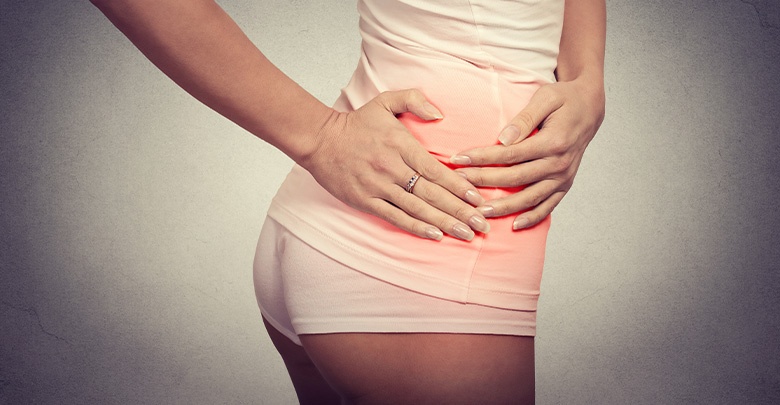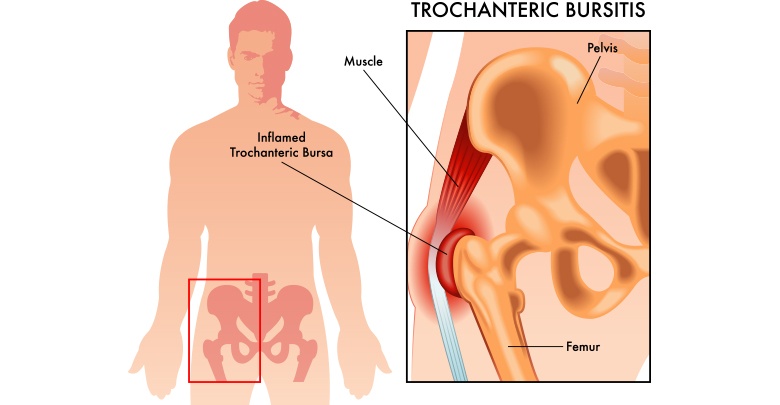Bursitis of the Hip
Do you think you may have bursitis of the hip? The condition and causes simply explained

Do you think you may have bursitis of the hip? The condition and causes simply explained
USE the OMH exclusive code "HEALTH15" to Save 15%What is bursitis of the hip?

A bursa is a small fluid filled, jelly like sac, which lies between a bone and a tendon. Bursae are found all over the body. Their function is to enable tendons to glide smoothly over the bone or joint. Sometimes however, the bursa may become swollen, inflamed and painful.
Around the hip joint there are actually four bursae, which can possibly become inflamed and painful. The most commonly affected bursae are the trochanteric bursae and the iliopsoas bursae, which we explain in more detail in this article.
Causes of hip bursitis
- Gender and age: woman who are middle aged and older are more likely to develop hip bursitis than younger people and men
- Trauma: if you have sustained a fall onto the hip, or a sharp knock to the outside of your hip, it may have caused bruising. Sometimes there may be a haematoma (bleeding) in the bursa. An injury to the bursa will cause it become swollen, inflamed and painful.
- Muscle weakness: if the muscles around the pelvic area – which should work to stabilise your pelvis and hip joints – are very weak, it results in excessive shearing forces on the bursa. This friction can eventually cause the bursa to become irritated and inflamed. The main muscles – which are often weak in hip bursitis – are the gluteus medius and gluteus minimus. The other muscles such as the deep abdominals, hip flexors and the gluteus maximus are often also weak
- Muscle tightness: muscles such as the piriformis and the tensor fascia latae are often extremely tight when it comes to hip bursitis. This leads to excessive friction on the bursa, eventually causes swelling and chronic pain
- Postural imbalances: scoliosis, leg length differences and chronic lower back issues also predispose people to developing hip bursitis. The reason for this is that the biomechanics of how the pelvis stabilises during walking, running and standing are negatively altered – resulting in excessive pressure on the bursa.
- Chronic irritation: especially if the above three factors of weakness, tightness and postural imbalances are present – which they almost always are – the bursa becomes easily inflamed and painful from daily activities such as walking, standing for long periods of time, climbing the stairs or moving from sitting to standing
- Surgery: previous surgery to the area may cause a direct injury to the bursa (bleeding or swelling) or the scar tissue may cause excessive tension across the bursa, leading to pain and inflammation. Surgery may also cause the muscles around the hip to “switch off”leading to weakness
- Pre-existing conditions or diseases such as diabetes, rheumatoid arthritis, osteoarthritis, gout, psoriasis or thyroid problems may predispose one to developing hip bursitis.
- Calcium deposits and bone spurs which are common in osteoarthritis and older patients may irritate the sensitive bursa.
Want more information?
Now that you have learnt more about the causes of hip bursitis, you may want to know about the different types of hip bursitis, and importantly the various treatment options and exercises available to you.
References
- Aaron DL, Patel A, Kayiaros S, Calfee R. Four common types of bursitis: diagnosis and management. J Am Acad Orthop Surg. 2011 Jun;19(6):359-67. doi: 10.5435/00124635-201106000-00006. Review. PubMed PMID: 21628647.
- Frank H. Netter, Atlas of Human Anatomy, International Edition, Elsevier Health Sciences, London
- Neuromusculoskeletal Examination and Assessment, 4th Edition, Churchill Livingstone, 2011